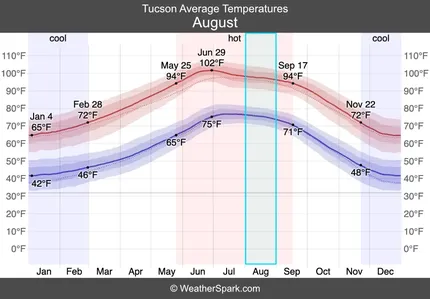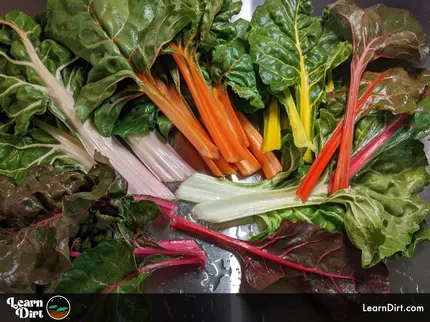Table of Contents
- The Role of Phosphorus in Food Production
- How Is Phosphorus Cycled in Agricultural Systems
- Phosphorus Outputs - How Is Phosphorus Lost
- Phosphorus Inputs - How Is Phosphorus Gained
- Sustainable Phosphorus Use - Mitigating Phosphorus Loss
* Our articles never contain AI-generated slop *
Phosphorus plays a critical role in food production, soil fertility, and crop yields. Gardeners and farmers both rely heavily on phosphorus for agricultural production.
Unfortunately there is a limited finite supply of phosphorus on Earth, and it cannot presently be manufactured.
As a non-renewable resource, phosphorus supply is decreasing and price and scarcity are increasing. At current usage rates, it's estimated that demand for this critical nutrient will outpace supply sometime this century.
Disclaimer: This post may contain affiliate links. Refer to the privacy policy for more information.
For these reasons, it's important for growers to understand the phosphorus cycle so they can mitigate phosphorus loss and utilize it effectively.
The Role of Phosphorus in Food Production
Phosphorus is an essential nutrient for crop and food production. Behind carbon and nitrogen, phosphorus is the 3rd-most critical nutrient for plant development.
Crop yields and quality increase greatly with increased availability of phosphorus, and nutrient uptake is enhanced when enough phosphorus is present in soils.
Phosphorus is especially important for flowering, fruiting, energy transfer, and stress resistance in agriculture.
By managing this critical nutrient properly, gardeners and farmers can increase sustainability, food quality, productivity, and profitability of their food production systems.
How Is Phosphorus Cycled in Agricultural Systems

Phosphorus Outputs - How Is Phosphorus Lost
Understanding the outputs of your agricultural system is critical in order to mitigate loss, therefore reducing necessary inputs and cost.
Join The Grower's Community
Looking for a place to meet growers,
ask questions, share knowledge, be heard,
and feel like you belong? 🌱
Check It Out!
Phosphorus is lost from agricultural systems via a number of channels - each representing an opportunity to reduce loss and increase P retention.
Let's look at some of the ways our gardens, farms, and animal agriculture may lose phosphorus.
Phosphorus Loss via Groundwater Leaching
The majority of the phosphorus naturally available in soils is insoluble. Because of this, P loss from soils due to groundwater leaching is not a major concern in organic systems.
That said, many sources of phosphorus fertilizer which are not OMRI certified for organic use are highly-soluble in water:
- Ammonium Polyphosphate (APP) ~100% water-soluble
- Diammonium Phosphate (DAP) ~90% water-soluble
- Triple Super Phosphate (TSP) ~90% water-soluble
- Superphosphate (OSP) ~85% water-soluble
- Concentrated Superphosphate (CSP) ~85% water-soluble
- Monoammonium Phosphate (MAP) ~82% water-soluble
By contrast, rock phosphate is OMRI certified and has a water solubility of 0%.

These numbers illustrate how use of synthetic and processed forms of phosphorus fertilizer in agriculture make your soils susceptible to P loss via groundwater leaching.
This is a great reason to only utilize organic-certified fertilizers to reduce solubility and therefore loss from the system. I personally apply 2.5lbs of this rock phosphate per 100 square feet each year.
You'll need to adjust application rates based on initial soil quality, production volume, soil erosion rate, climatic conditions, and in conjunction with other amendments you add. That said, it's difficult to overdo it on organic nutrients with low solubility that break down slowly over time like phosphate rock.
A soil test is recommended to determine your soil's phosphorus needs, but if you're short on time or money you can usually bet on tossing a bag of it into your dirt being a great idea (if it's been a while.)
Phosphorus Loss via Erosion
When topsoil erodes because wind and water, it takes all its nutrients with it - phosphorus included.
Erosion accounts for a significant portion of agricultural phosphorus output, so erosion mitigation is an important component in any plan to retain more phosphorus.
Wind Erosion
When soil quality is depleted, susceptibility to wind erosion increases. Low quality soils and poor land management both eventually lead to increased wind erosion of soils.
For this reason, holistic land management techniques and understanding are important factors for phosphorus retention in agriculture.
Lack of Vegetating Cover
Roots help to bind and hold soil together, while fallow land lacks the structure and stability of plant roots. When land is left fallow for any length of time, it becomes more prone to wind and water erosion.
This is one of the reasons why the regenerative agriculture movement stresses the importance of always having living roots in the soil.
Additionally, vegetative cover provides the carbon-based root exudates which the soil microbiome relies on as its primary source of food. Without living roots in the soil, microbiome die-back begins rapidly. Without a healthy microbiome to bind soil and water and cycle nutrients, wind erosion follows suit.
Lack of Mulch
Similar to living roots and cover crops, mulching soil is also important for reducing wind erosion.
When topsoil is directly exposed to sunlight and weather extremes, it can rapidly dry or freeze. This is not good for the soil microbiome, which must retreat to lower layers of soil. Subsequently, dead topsoil is highly prone to erosion.
Mulch covers soil in an insulative layer which helps lock in moisture, keep the sun off, and stabilize soil temperature. It also provides nutrients and decaying organic matter which feeds the microbiome and the soil.
On top of that, mulch provides a physical barrier that blocks wind and rain erosion directly.
Dig Cool Merch?
This makes mulch a great means to mitigate phosphorus loss in gardens and on farms.
Soil Disturbance
Heavy tillage is the primary cause of soil disturbance, and can cause issues with erosion, loss of organic matter, and compaction.
Tillage also breaks up soil structure - which leads to reduced moisture holding capacity and further susceptibility to erosion.
As the agriculture industry's understanding of soil health and sustainability increase, we're importantly seeing more emphasis placed on no-till or minimal tillage, as well as chop & drop. These methods are another important way to reduce phosphorus loss from agricultural systems.
Water Erosion
Erosion from heavy rainfall and flood events can also take topsoil from land - and phosphorus along with it. This is especially true in climates with extreme variance in rainfall throughout the year, such as deserts.
Additionally, steep slopes or gradients, clear-cutting and ecosystem degradation, poor drainage, and lack of vegetation all compound the risks of water erosion.
Through regenerative methods and sustainable soil management, however, topsoil loss from water erosion can be greatly mitigated. Not only does topsoil retention keep more phosphorus on your land, it maintains more of all soil nutrients critical for food production.
Phosphorus Loss via Crop Loss
Crop loss takes many forms such as insect and pest damage, weather damage, competition from weeds, and degraded soil health.
While some of these don't cause phosphorus outputs from the system, others do so it's important to mitigate crop loss and create systems for recycling nutrients from lost crops.
Insect and Pest Damage
Pests and wildlife often act as a channel for nutrient loss (including phosphorus) when they show up, consume crops, and then leave.

The presence of birds, chickens, lizards, and other small mammals can act as a means of capturing the nutrients from grasshoppers and converting it into manures which can be recycled back into soil.
Chickens specifically are a great way to capture nutrients from insects who have brought it onto your land from elsewhere. Chickens can help to mitigate phosphorus loss and increase phosphorus capture by chowing down on bugs and returning their nutrients to the soil.
Likewise, providing habitat to birds, owls, and reptiles around your garden or farm can help decrease P loss, increase P capture, and speed up the cycling of valuable nutrients.
Weather Damage
Phosphorus Loss via Food Chain
Food chain losses represent another outflow of phosphorus and other vital nutrients from your ecosystem.
If you're growing just for yourself or family, composting your food scraps is a great way to mitigate losses from your own small food chain.
I've been able to eliminate more than half of my waste stream through composting - which means lots of nutrients diverted into my soil. This is an easy way to stop one more outflow of nutrients from your ecosystem.
For those growing on a commercial scale, food handling, transport, and storage losses should be avoided to the extent possible. Importantly, composting food that is lost through the supply chain can help recapture nutrients like phosphorus if food chain distance and logistics allow.
Phosphorus Loss via Livestock
Livestock losses constitute further loss of various nutrients from your land, phosphorus included.
If livestock is grazed on non-arable land
Livestock Manure Loss
Nutrient Loss From Livestock via Non-Arable Soil
Livestock Nutrient Loss via Surface Runoff
Phosphorus Loss via Sewage
Waste from animals and from the humans who consume the produce and meat grown from the land can contribute to the loss of phosphorus and other nutrients from the system.
When waste is not captured, composted, and recycled, these streams act as nutrient outflows from your land. Each additional outflow requires more nutrient inputs for your system to achieve equilibrium. That means failure to capture and compost manure and sewage will cost you more time and more money to replace the missing phosphorus and other elements.
Of course if you're growing food for commercial consumption there will inevitably be nutrients lost from your system to your customers, and some of the money they pay you will always go towards additional nutrient inputs.
If you're growing food for yourself, however, you've got a great opportunity to utilize a composting toilet or outhouse as a way to prevent the outflow of valuable nutrients from your land. This will of course depend on local zoning laws and the time, money, and ability you have to put into it.
Phosphorus Inputs - How Is Phosphorus Gained
Phosphorus can be purchased in the form of rock phosphate, seabird guano, bat guano, blood meal, bone meal, crab meal, fish bone meal, fish meal, and various other sources which can be amended into phosphorus-depleted soils.
Check out our Organic Nutrient Sources chart to find more options.
If you have access to fish heads and bones, crab and lobster shells, mussle or clam shells, bones from roasting chickens and other animals, etc you can utilize these as great sources of phosphorus for your garden or farm.
Sustainable Phosphorus Use - Mitigating Phosphorus Loss
That's all for now, thanks for reading!
If you have any questions, comments, or would like to connect with fellow gardeners, head on over to the forum and post there.
























